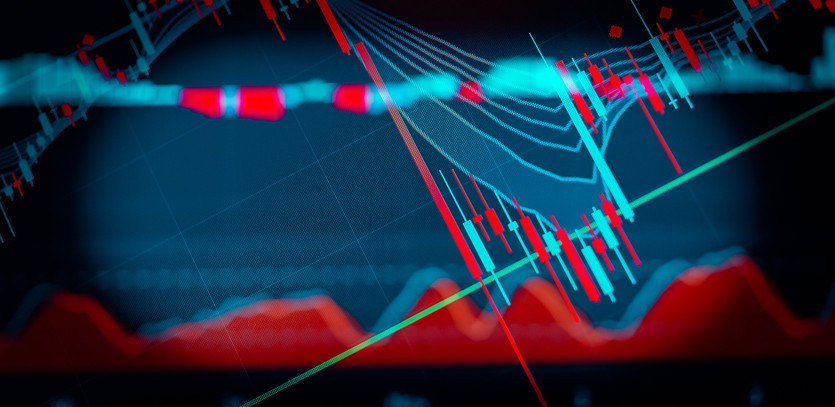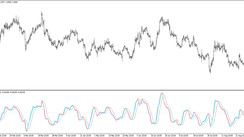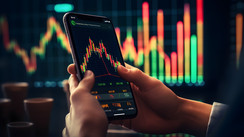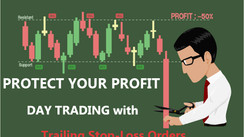The Distinct Worlds of Forex and Commodity Trading
Forex trading and commodity trading are different beasts, each shaped by the unique attributes of the products they trade. While both forex and commodities can be traded using pre-determined contracts on a futures exchange, commodities don't find a place in the forex marketplace. Commodities markets involve trading in tangible goods, such as coffee, cocoa, and extractive products like gold and oil. In contrast, the forex, or foreign exchange (also known as FX), operates as a global marketplace for currency trading, including dollars, euros, and yen.
The analysis techniques and strategies for both these markets often mirror each other, but the choice between the two largely boils down to individual preference and comfort with certain factors.
Weighing Forex against Commodities
- Forex and commodities may be traded on a futures exchange, but commodities don't get traded on the forex market.
- There is stringent regulation in commodity trading, in contrast to the lax regulation in forex trading.
- Leverage is a tool used in both markets, but its usage is more extensive in forex trading than in commodities.
- Commodity exchanges have daily range limits, while the forex market—being an over-the-counter market—has no such constraints.
- Trading commodity-based currencies provides an avenue to venture into both markets simultaneously.
The Influence of Individual Preferences in Market Choices
When it comes to trading, personal preference is a key driver behind one's choice of market. Certain individuals feel more at ease operating within particular market structures, resonating with the specific attributes of these financial ecosystems.
-
Tangible vs. Intangible: Commodities offer a sense of tangibility—traders deal with physical goods they can relate to. This could be anything from the coffee they sip every morning to the gold jewelry they wear or the oil that fuels their car. Forex, on the other hand, revolves around the intangible world of currency values. Some traders find it appealing to trade currencies tied to various global economies and geopolitical events.
-
Daily Engagement: Trading commodities like wheat or sugar cane provides a connection to everyday life—a loaf of bread, a sweet dessert, these are things we see, touch, and consume daily. This constant interaction can enhance a trader's sense of engagement and bring a degree of personal satisfaction.
-
Inherent Interest: Some traders may have a particular interest in a commodity or a set of commodities, stemming from personal hobbies, professions, or academic backgrounds. A nutritionist might have a fascination for the grain market, an engineer may be intrigued by oil and metals, while a forex market might attract an economist.
-
Risk Appetite: The choice between forex and commodities can often reflect a trader's risk appetite. The heavily regulated nature of commodities markets might appeal to those who prefer a more stable, controlled trading environment. Conversely, those with a higher risk tolerance might be drawn to the forex market, with its less stringent regulation and higher leverage possibilities.
-
Market Dynamics: Traders may prefer the specific dynamics of one market over the other. The commodities market is influenced by factors such as weather conditions, geopolitical issues, and supply-demand shifts. In contrast, forex market dynamics are shaped by economic indicators, interest rates, and geopolitical events.
In essence, personal preference in market choice is not only about comfort and familiarity. It's about one's connection with the market—be it tangible or intangible, personal risk tolerance, and inherent interest in the market's dynamics.
Regulatory Disparities: The Commodities vs. Forex Battleground
The extent of regulation in a market can significantly influence a trader's comfort level and decision to participate. In comparing commodities and forex markets, the degree of regulation varies significantly.
-
Stringent Supervision in Commodities: Commodities markets operate under a high degree of regulatory oversight. This regulation extends to brokers, the trading process, and even the commodities themselves, many of which are subject to strict quality, quantity, and delivery standards. Traders who value security, transparency, and predictability might lean towards the regulated environment of commodities trading.
-
The Wild West of Forex: In stark contrast, the forex market is often likened to the wild west. While it's not completely unregulated, forex trading is far less controlled. Regulations exist but enforcement is often lax, leading to a somewhat nebulous environment.
-
Sidestepping Regulations: In the forex market, there's a notable level of circumvention of existing regulations. This lack of strict adherence can be both a boon and a bane—offering opportunities for higher gains but also greater risks.
-
Governmental Influence: Some traders derive comfort from knowing that there's a level of governmental oversight, a safety net of sorts. This sentiment is particularly prevalent among commodities traders who appreciate the regulatory structures in place. On the other hand, forex traders may relish the freedom of the less regulated environment, viewing it as an opportunity to maximize their trading strategies and profits.
-
Emerging Regulations: It's important to note that the regulatory landscape for both commodities and forex markets is not static. New laws and regulations are frequently introduced, especially as these markets continue to evolve with advancements in technology and changes in the global economy.
Ultimately, whether one prefers the stringent regulation of the commodities market or the looser reigns of the forex market, it's a decision that depends on individual comfort with risk, desire for transparency, and personal trading style.
Harnessing Leverage: A Comparative Analysis of Forex and Commodity Markets
Leverage is a powerful tool in both forex and commodity markets, albeit with differing scales of application. Here, we delve into the unique nuances that characterize the use of leverage in these two trading environments.
-
Leverage Defined: Essentially, leverage involves borrowing capital to amplify potential profits from trades. However, it's a double-edged sword, as losses can also be magnified.
-
Easy Access in Forex: In the forex market, accessing leverage is remarkably straightforward. Simply by depositing a small amount, say a few hundred dollars in your trading account, you gain the ability to control a significantly larger amount of trading capital. This ease of access is one of the striking features of forex trading.
-
More Restrained in Commodities: While leverage is also employed in commodities trading, it's a more restrained affair. The degree of leverage available doesn't match the impressive scale seen in forex trading. This is due, in part, to the more regulated nature of commodities markets.
-
Impact on Trading Decisions: The extensive leverage possible in forex trading can shape trading strategies and decisions. It allows for greater market exposure, which can lead to higher potential returns, but it also increases the level of risk.
-
Market Volatility and Leverage: Traders need to consider market volatility when using leverage. Forex markets are typically more volatile than commodities markets, which can amplify both profits and losses for traders using high leverage.
To summarize, while leverage is available in both forex and commodities markets, it's more pronounced in forex. The potential for higher returns might appeal to some traders, but the associated risks demand a disciplined and strategic approach to trading.
Exchange Limits: Divergent Paths in Forex and Commodities Trading
Exchange limits present another crucial point of differentiation between forex and commodities trading. Here, we dissect the implications of these constraints and how they shape the trading landscape in these markets.
-
Exchange-Based Commodities Trading: Commodity trades transpire on specific exchanges. These platforms impose daily range limits on the price movement of traded commodities. These range limits act as regulatory buffers, curbing extreme price volatility.
-
'Limit Up' and 'Limit Down': When these range limits are surpassed, the market is said to be 'limit up' or 'limit down,' effectively freezing trades at these price levels. Traders on the losing side of such movements can find themselves helplessly watching their account balance diminish, unable to intervene due to these limits.
-
The Over-the-Counter Nature of Forex: In stark contrast, forex operates as an over-the-counter market, primarily transacted through brokers or in the interbank market. As such, forex doesn't adhere to the same exchange-imposed limits that characterize commodity markets. This provides forex traders the flexibility to execute trades regardless of how extreme currency price movements may be.
-
Risk Management Considerations: The absence of exchange limits in forex trading introduces an additional layer of risk. Although losses can indeed pile up quickly in volatile market conditions, traders generally retain the ability to exit their positions, a luxury that can sometimes elude their counterparts in commodities trading during 'limit up' or 'limit down' scenarios.
-
Trading Strategy and Exchange Limits: These differing limits, or lack thereof, can significantly impact a trader's approach. Commodity traders might focus on avoiding 'limit up' or 'limit down' situations, while forex traders may develop strategies that capitalize on high volatility periods.
In conclusion, the presence of exchange limits in commodities trading and their absence in forex markets is a distinguishing feature that can have substantial implications for risk management, trading strategy, and overall trading experience.
Finding a Middle Ground: Commodity-Based Currencies
Traders seeking a middle ground could explore commodity-based currencies such as the Australian dollar, Canadian dollar, and the New Zealand dollar. For instance, the Australian dollar historically shares a positive correlation with Spot Gold prices. Similarly, the New Zealand dollar, tied closely to the dairy industry, correlates positively with whole milk powder prices. Additionally, the Canadian dollar correlates positively with crude oil prices, mirroring the strong trends in oil from 2014 to 2016.
Emerging market currencies also reflect commodity growth and usually show an inverse correlation with the US dollar. They also offer higher rollover than developed market currencies. In the right market conditions, emerging market currencies can be a valuable addition to the volatility inherent in commodity trading.





